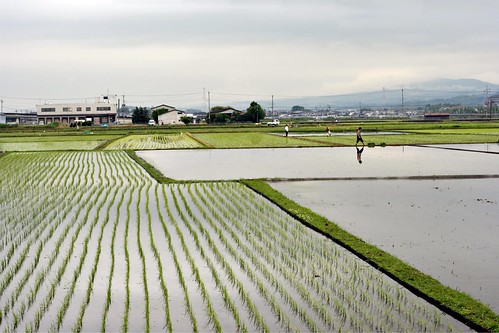Another aspect not touched on in this article is that small farmers are small for a reason - land use and ownership is also tightly regulated. A small farmer can often not build up his operation since local regulations forbid him from owning more land. And land once used for rice production can often not be used for anything else without explicit permission from the local council. And not only does a lot of land lie fallow because of a wish to limit rice production; a fair amount of land is owned by people not even living in the area. They inherited the land from their parents or grandparents, but they are living and working in a distant city, not in their home village. With a sentimental attachment to the place and the difficulty of selling the land a lot of it lies unused. A Yomiuri article last year mentioned that over 10% of members of Japan's farming association doesn't actually farm in any way.
The basic problem - which I brought up here before - lies in that Japanese agricultural policy treats farming, and rice farming especially, as a cultural activity, not an industrial one. Either perspective is defensible up to a point of course. But you can't have it both ways; traditional, protected agriculture will not give you industrial-scale efficiency. And industrial agriculture will not preserve old traditional ways. You choose one or the other, really, and with a self-sufficiency rate at a low
[edit: got the self-sufficiency rate wrong]


Well well well......
ReplyDeleteGreat post, I love the photo.
ReplyDeleteJapan's food self-sufficiency is generally thought to be 40%, not 60% (calculated based on calories). For rice, this country is 100% self-sufficient (a policy that I support).
Sweden also used to be basically self-sufficient, but free trade rules are making that a difficult goal for most countries to acheive.
Thanks; corrected the text.
ReplyDeleteRice self-sufficiency rate is more than 100%, and that's part of the problem. The agricultural system is still heavily biased towards growing the traditional foodstuffs, but Japanese today aren't eating the same way as the country did three or four generations ago. Part of the problem is that producers are not producing what people want to eat.
It's another aspect of having chosen to see agriculture as culture, not industry. Makes for good scenery, but lousy food safety.